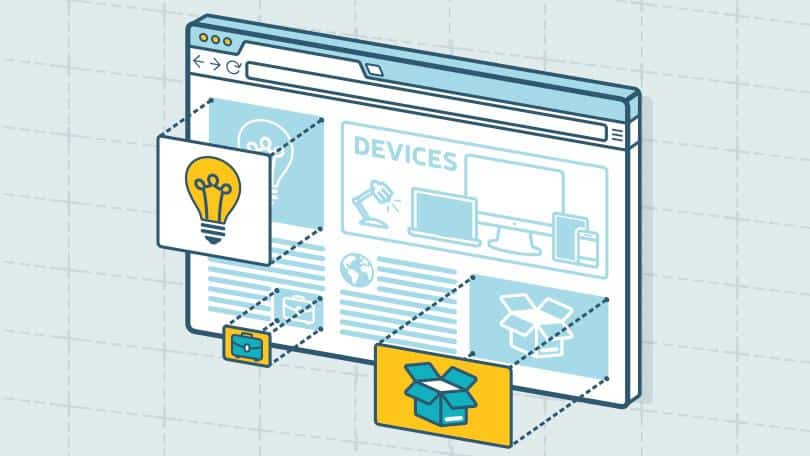In today’s competitive marketplace, having an online presence is crucial to the success of any business. Recent studies show that 97% of consumers use search engines to find local businesses. But simply throwing together a few pages with your email address is going to cut it.
Your website is your online salesman. It needs to inspire trust and convince potential customers that your company is worth listening to. Keep the following 10 techniques in mind when planning with your web development team to create a business website that generates leads and drives sales.
IMAGE: PIXABAY
1. Value Proposition
When a visitor lands on your site, you have a very short period to convince why they should stick around and explore what your business has to offer. This is where your value proposition comes into play. You need to deliver a clear and concise message to your visitors that highlights the value you offer. A great value proposition delivers on these factors:
- Specific – what specific benefits will your customers receive from your product or service?
- Pain point focussed – how does your product help people overcome a problem or achieve a goal?
- Exclusive – what makes your product or service better, or at the very least different, from your competitors?
You have a very short period of time to communicate your message. Create a compelling value proposition and make sure the user can understand it from the moment they land on your site.
Therefore, understanding the difference between a landing page and homepage is vital for clear communication. While the homepage acts as your brand’s central hub, a landing page is designed to quickly grab attention and prompt specific actions, highlighting your offering’s distinct features. Achieving this balance ensures authentic engagement with your brand.
2. Reviews And Social Proof
Studies show that 61% of online shoppers check product reviews before making a purchasing decision. Even more revealing, people place 12X more trust in reviews than product descriptions and sales copy. In plain terms, people want reassurance and proof from their peers before committing to a purchase. Incorporate social proof into your web development by including:
- Customer ratings and product reviews.
- Testimonials from your happy customers.
- Social media statistics if you have a large following.
- Industry certificates and awards.
3. Calls To Action
What do you want users to do once they’ve landed o your site? If you don’t direct them, users won’t know what action to take next. Calls to action (CTAs) are crucial for indicating the next step a potential customer should take.
Your CTAs shouldn’t be solely focused on the final stage of your sales funnel. Nurture your potential customers with CTAs that point them to educational materials that help users understand their pain points and goals.
The aim is to bring users through each stage of your sales funnel, generating leads, and eventually converting them into customers. Furthermore, incorporating a website visitors tracker can provide valuable insights into user behavior, allowing you to track the effectiveness of your CTAs and optimize your marketing efforts based on real-time data.
4. Contact Information
If your business relies on people calling your business or contacting your sales team, make sure users can easily access that information. According to KOMarketing, 44% of people will leave a website if they cant find contact information or a phone number. Your contact information should be accessible on every page within a single click. Don’t frustrate users by making them search your site to find this information.
5. Use White Space
White space is an essential element of web development, increasing the aesthetic appeal and usability of your website. White space refers to the areas of a web page that are left blank. Although it might be tempting to view this area as wasted space, it’s crucial for improving the readability of your content and establishing a visual hierarchy for your web pages.
Strip away anything redundant or unnecessary for the objective of the web page. Eliminating these distractions strengthens the message you want to convey and increases the usability of your website.
6. Stick To Standard Layouts And Structure
According to Magicdust, a web design company in Sydney, it’s great to differentiate your brand from your competitors, but your website layout isn’t the place to do it. You can use your copy, images, and branding to be different, but stick to the best practices when it comes to how users interact with your site.
For example, some cars look spectacular. They’re unique and striking. But they all still have four wheels and a steering wheel. A familiar layout helps users quickly find their way around your site and explore your products and services. Stick to the following layout best practices:
- Logo in the top left.
- Navigation bar in the header.
- Social icons in the footer.
- Mobile responsive design.
7. Navigation
Navigation is a top priority of web development. You want users to be able to easily find their way around your site and locate what they are looking for. Create a consistent page layout and intuitive navigation menu so users can easily explore your products and services. If users can’t easily find what they are looking for, they’ll get frustrated and find a competitor that offers a better experience.
8. Need For Speed
Speed is crucial. Both users and search engines prefer a quick and agile site over a slow loading site. Numerous studies show when a page takes longer than three seconds to load, the bounce rate dramatically increases.
This means your users are leaving before they interact with your business, and indicates to search engines that visitors don’t find your website useful, which directly affects where you rank in search results. Make sure speed and performance are a key consideration in your web development.
9. Testing
Websites are designed for users, and getting feedback from users is a crucial stage of web development. Testing your site with real users can reveal what is performing well, what needs improvement, and what is frustrating users.
Every business is different, and what works for one website might not be as effective for another. Testing provides valuable insights, highlight broken links, slow page speeds, and other errors that may have been overlooked. Feedback from just a few users can identify these issues and help you improve the user experience of your site.
10. Keep It Fresh
Once your website is live, publishing fresh content shows potential customers they have reached a lively business and helps to establish trust and credibility. Most of the pages on your site won’t require constant updates, but adding a regular blog that showcases your new products, upcoming events, and promotions is a great way to improve your SEO and to present your company as a thriving business. You should also schedule regular maintenance checks to ensure that your website is performing and that your potential customers see relevant and correct information about your company.
Building A Business Website – Conclusion
Every business needs a website to thrive in today’s marketplace, but not all websites are created equally. Make sure you include the above techniques into your web development to ensure your website looks professional, generates leads, and is an asset for your business.
While social media profiles can increase your visibility online, they are rented space that can be affected by changes to the social platform. Your website is real estate that you own, it should be the hub of your online presence.
If you are interested in even more technology-related articles and information from us here at Bit Rebels, then we have a lot to choose from.


COMMENTS